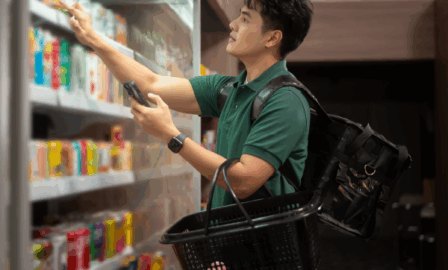M&A Deal Trends in Consumer Products
Between the easing of lockdown restrictions and heightened inflation, the past 12 months have shaken businesses across the globe. Consumer product companies have had to adapt to sudden and radical changes in the environment, from significantly higher costs to disrupted supply chains. M&A took a backseat as companies looked inward to stabilize operations during the pandemic. Post-COVID, we have seen the changes in demand that have shifted what companies are targeting from an M&A perspective. To stay competitive and adapt to new trends, companies are adapting their M&A strategies accordingly. Below, we highlight key M&A trends in consumer products based on major deals in 2022 and what we expect to see in the space in 2023:
- CPG Manufacturers Leveraging M&A to Drive Category Growth
- Health & Wellness Continues to Drive Consumer Preferences within CPG
- Beverage Manufacturers Seek Product Diversification in New Segments
- Pets Continue to be a Growing Focus for Customers and CPG Brands
M&A Trends in Consumer Products
CPG Manufacturers Leveraging M&A to Drive Category Growth
Consumer goods companies are constantly expanding to stay ahead of the competition. This past year, in particular, companies were looking for ways to gain access to new consumers and markets around the globe. These 2022 M&A deals also had an emphasis on improving overall brand value by creating new synergies for some of the largest CPG and apparel brands out there.
- July 2022: Olam Food Ingredients (an international food and ingredients company) acquires Club Coffee (an established Canadian coffee company) for $117MM, allowing it to expand into the North American coffee market.
- November 2022: Estée Lauder inks deal to acquire Tom Ford for $2.8B. Estée Lauder was already licensing the Tom Ford brand for its beauty line. This deal will allow Estée Lauder to continue to operate this brand – which is one of its top beauty brands – versus losing this revenue to a competitor.
Health & Wellness Continues to Drive Consumer Preferences within CPG
With consumers becoming increasingly aware of their health, there has been a surge in acquisitions of brands that offer healthy alternatives. Although 2021 showed a peak of interest in health and wellness M&A, conditions in 2022 still pointed to robust activity pertaining to M&A events. In 2022, we saw CPG brands such as Unilever and Nestle acquire health and wellness companies. Pharmaceutical companies were also concentrating on driving value creation through consumer units. The efforts are aligned with consumers’ growing demand – which will continue in 2023 – for personalized wellness products, supplements, hydration drinks, and overarching categories of healthier foods and lifestyles.
2023 is forecasted to see large manufacturers target “natural” food brands across categories, and we expect consumers to continue to seek out more natural and clean products in their purchases. The goal of 2023 M&As will be to bolster portfolios that can 1) sustain the growth spurred on by the pandemic and trend and 2) gain innovation.
- February 2022: Nestlé acquired a majority stake in Orgain, a leader in plant-based nutrition. This investment fuels Nestlé’s focus on their health and wellness portfolio housed under the Nestlé Health Science brand.
- February 2022: Nestlé to acquire Pronokal, a leading provider of weight loss and weight management services. The acquisition is seen to compliment Nestlé’s current scientific expertise while pushing to grow Pronokal to a larger customer base.
- March 2022: The L’Occitane Group, a leading sustainable beauty manufacturer, acquired a majority stake in Grown Alchemist, another clean skincare company. This investment was a natural fit since both companies strive to provide products for health-conscious consumers globally.
- April 2022: Procter and Gamble acquires TULA (a prebiotic skincare products) for an undisclosed amount. P&G is looking to continue to grow their self-care portfolio by investing in brands whose products really make a difference for consumers.
- May 2022: Unilever acquires majority stake in Nutrafol, a leading provider of hair wellness products. This acquisition is one of many for Unilever over the last two years as they look to tap into consumers’ growing interest in overall health and wellbeing.
- June 2022: Mondelez acquires Clif Bar for $2.9B. Mondelez understands that consumers have been moving to more health-conscious options. This move further helps to build out a more robust health and wellness portfolio.
- December 2022: Mars, Inc. acquired Trü Frü, a “better for you” snacking brand for undisclosed amount. Health and wellness snacking is a focus for Mars, so this acquisition continues to help them gain traction within this category.
Beverage Manufacturers Seek Product Diversification in New Segments
Consumption of alcohol increased significantly during the pandemic, with rising demand for premium spirits, alcoholic seltzers, and craft beer. On the other end, wine demand, although a sharp peak during the height of the pandemic, has steadily decreased, and wine supply is becoming increasingly more expensive due to harder harvesting conditions (California fires, higher insurance, etc.).
There’s also a spotlight on low/non-alcoholic beverages and CBD drinks. Alcoholic beverage companies are trying to expand their portfolio, as there’s a growing demand for non/low-alcoholic beverages, especially from the younger generations. The mergers and acquisitions that have happened in the last three quarters highlight these trends:
- March 2022: Pernod Ricard acquired majority of France’s Château Sainte Marguerite as part of their luxury portfolio. The Château Sainte Marguerite brand is synonymous with the Super & Ultra premiere categories and is seen as a perfect addition to Pernod Ricard’s existing luxury portfolio.
- July 2022: E&J Gallo Winery made a “strategic investment” in small-batch American whiskey maker Horse Soldier Bourbon. The deal allowed for the distribution by Spirit of Gallo immediately. Horse Soldier bourbon is a leader within the rapidly growing American-Whiskey segment, and this partnership will help to establish Spirit of Gallo within the space.
- September 2022: Sapporo Holdings acquired Stone Brewing, a U.S. craft beer for $165MM. Sapporo’s focus is utilizing the brewing infrastructure that Stone has in place to grow their U.S. market penetration. Sapporo is currently the top selling Asian beer brand in the U.S., so expanded production capabilities will allow them to capitalize on this momentum.
- November 2022: Keurig Dr. Pepper invested $50MM in Athletic Brewing Company, a non-alcoholic beer company, to obtain a minority stake. This move aligns with the companies push into fast-growing drink segments, like non-alcoholic options.
Pets Continue to be a Growing Focus for Customers and CPG Brands
During the pandemic, pet sales skyrocketed, leading to an increase in demand for pet food. This resulted in global sales of $110B in 2021, forecasted to increase 27% by 2026, which presents an opportunity for CPG portfolio growth. Although inflation raises some risk to having less disposable income and will drive less demand for premium choices, private equity firms and companies are eager to continue to gain stock in the market through wide shipping networks and strong relationships with downstream retailers. The first half of 2022 saw 35 mergers and acquisitions aiming to vertically integrate manufacturers and suppliers in the pet food and treats industry. In the coming years, the industry will continue to become less fragmented, favoring national corporations.
- January 2022: Mars Petcare, a division of Mars Inc. announced a $1B acquisition of NomNomNow, a direct-to-consumer fresh pet food brand. The brand will be integrated into the Royal Canin division, but it will continue to operate autonomously. The goal of this acquisition is to gain new technology from NomNomNow while leveraging synergies with the existing Royal Canin division.
- January 2022: Global pet healthcare company Swedencare acquired NaturVet, a U.S.-based producer of therapeutic supplements for pets $447.5M. The acquisition opens up a new range of products for Swedencare while allowing both brands to gain a larger global footprint.
- April 2022: White Bridge Pet Brands merges with Agras Pet Foods. This merger allows both companies to expand their operations globally while gaining synergies in manufacturing and distribution.
- April 2022: Worldwise, Inc. a pet food and supplies platform acquired Pet Factory, a manufacturer of chews, treats, toys and accessories for pets. This acquisition was the third for Worldwise in the past few months. This M&A activity is helping to push its brands into new product categories while optimizing production capabilities.
- November 2022: Mars Petcare, a division of Mars, Inc. has signed a deal to acquire Champion Petfoods, maker of Orijen & Acana for an undisclosed amount. Champion’s brands are seen as a compliment to the existing Mars Petcare portfolio and will help to serve a broader range of pet owners.
Looking Ahead to 2023
In 2022, we saw an overall increase in growth momentum within large CPG companies aggressively acquiring insurgent brands. Deals related to small brands accounted for 75% of M&A volume among consumer product companies compared to less than 50% a decade ago. Research shows that consumer product companies who frequently acquire other companies outperform their peers with twice the sales growth rate, and that every additional percentage point of growth acquired is rewarded by higher enterprise value.
That said, in early 2022, macroeconomic and geopolitical uncertainties eroded consumer confidence, which slowed M&A activity to pre-pandemic levels. These uncertainties will continue to impact companies as we move through 2023, and it’s more important than ever to ensure that companies are using due diligence when evaluating any M&A deals.
Our M&A consulting team continues to have a pulse on the latest trends, insights, and capabilities required by due diligence teams and executives alike when progressing through the deal process. To better understand how these trends impact your business, reach out to us.
Subscribe to Clarkston's Insights



